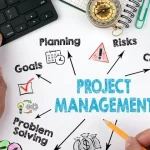Negotiation is an art that can make or break a deal. Whether you’re a seasoned entrepreneur, a rising executive, or a savvy sales professional, the ability to negotiate effectively is crucial to achieving your goals and getting ahead in today’s fast-paced, competitive landscape. But in a world where traditional negotiation tactics are no longer enough, how do you stay ahead of the curve and close the deals that matter? The answer lies in adopting a modern approach to negotiation, one that combines timeless principles with cutting-edge strategies and a deep understanding of human psychology. In this post, we’ll explore 7 negotiation tips that will help you navigate the complexities of modern deal-making, build stronger relationships, and drive business success. From mastering the art of active listening to leveraging the power of emotional intelligence, get ready to elevate your negotiation skills and become a true deal maker.
The Art of Negotiation in the Modern Era
In today’s fast-paced, interconnected world, the art of negotiation has evolved to become a crucial skill for success in both personal and professional realms. Gone are the days of traditional, hard-nosed bargaining tactics, where the goal was to “win” at all costs. Modern negotiation is about collaboration, creativity, and strategic communication. It’s about finding mutually beneficial solutions that satisfy all parties involved, while also fostering strong, lasting relationships.
Tip #1: Prepare, Prepare, Prepare – Know Your Worth
Before you even step into the negotiation room, it’s essential to lay the groundwork for success. Preparation is the cornerstone of effective negotiation, and it’s surprising how many people overlook this crucial step. Knowing your worth is not just about having a clear understanding of your goals and limits, but also about being intimately familiar with the value you bring to the table. What makes your product, service, or idea unique? What sets it apart from the competition? What are the benefits that you can offer to the other party? By having a deep understanding of your worth, you’ll be able to confidently articulate your value proposition and negotiate from a position of strength. This means doing your homework, researching the market, and gathering data to support your claims. It’s not just about being prepared to make an ask, but also being prepared to defend it. By knowing your worth, you’ll be able to enter the negotiation with confidence, clarity, and a clear sense of direction, setting yourself up for success from the very start.
The Power of Active Listening in Negotiation
In the heat of negotiation, it’s easy to get caught up in our own thoughts and strategies, forgetting that the other party is not just a opponent, but a human being with their own needs, desires, and concerns. This is where the power of active listening comes in – a game-changing technique that can completely flip the script on even the most challenging negotiations. By actively listening to the other party, you’re not only showing respect and empathy, but also gaining valuable insights into their motivations and pain points. This allows you to tailor your approach, tailor your message, and ultimately, craft a deal that meets both parties’ needs. It’s not about being passive or weak; it’s about being strategic and informed. By truly hearing and understanding the other side, you’ll be able to respond in a way that builds trust, fosters collaboration, and paves the way for a mutually beneficial agreement. So, the next time you’re at the negotiation table, remember to keep your ears open and your mouth closed – the results may just surprise you.
Tip #2: Separate the People from the Problem
In the heat of negotiation, it’s easy to get caught up in the emotions of the moment. A clever quip or a perceived slight can quickly escalate tensions, causing even the most seasoned negotiators to lose their cool. But, as the old adage goes, “you can’t negotiate with emotions.” That’s why it’s essential to separate the people from the problem. This simple yet powerful principle, coined by negotiation guru Roger Fisher, is a game-changer in the world of deal-making.
By recognizing that the issue at hand is a separate entity from the individuals involved, you can create a safe space for constructive dialogue to flourish. This means avoiding personal attacks, refraining from taking things personally, and focusing on the interests and needs that underlie each party’s position. It’s about addressing the problem, not the person. By doing so, you’ll not only de-escalate tensions but also foster an environment conducive to creative problem-solving and collaborative negotiation. So, the next time you’re at the bargaining table, remember to keep the people and the problem in separate lanes – your deal-making success depends on it.
Effective Communication Strategies for Successful Negotiation
Effective communication is the backbone of successful negotiation. It’s the difference between walking away with a deal that’s a win-win for both parties, and walking away empty-handed. In today’s fast-paced, digitally-driven world, effective communication is more crucial than ever. It’s no longer just about verbal communication, but also about being aware of nonverbal cues, tone, and even the subtleties of digital communication.
In a negotiation, words have power, and the way you choose to use them can make or break the deal. That’s why it’s essential to be clear, concise, and confident in your communication. Avoid using jargon or overly complex language that can confuse or intimidate the other party. Instead, focus on using simple, straightforward language that gets your point across.
But effective communication is not just about what you say, it’s also about how you say it. Your body language, tone, and facial expressions all convey a message, and it’s essential to be aware of these nonverbal cues to ensure they’re not undermining your negotiation efforts. Make eye contact, use open and approachable body language, and avoid crossing your arms or legs, which can give the impression of being closed off or defensive.
In the digital age, effective communication also extends to email, phone, and video calls. Be mindful of your tone and language in digital communication, and avoid using aggressive or confrontational language that can escalate tensions. Instead, focus on using a collaborative and solution-focused tone that encourages open and honest dialogue.
By mastering these effective communication strategies, you’ll be well on your way to negotiating like a pro and closing deals that benefit both parties.
Tip #3: Focus on Interests, Not Positions
In any negotiation, it’s easy to get caught up in the heat of the moment and focus on the surface-level demands of the other party. But, as the saying goes, “positions are not interests.” In other words, what someone is asking for may not necessarily be what they truly need or want. To truly negotiate effectively, you need to dig deeper and uncover the underlying interests, needs, and motivations that are driving their requests.
Think of it like an iceberg: the position is the tip that’s visible above the water, but the interests are the massive, unseen forces beneath the surface. By focusing on these interests, you can often find creative solutions that satisfy both parties’ needs, even if it means not meeting their original position. For example, if a customer is pushing for a lower price, their interest might not be just about saving money, but about staying within a tight budget or feeling like they’re getting a good deal. By understanding these underlying interests, you can offer alternatives that meet their needs without sacrificing your own bottom line.
By shifting your focus from positions to interests, you’ll be able to negotiate with empathy, creativity, and a willingness to find mutually beneficial solutions. This approach not only leads to more successful negotiations, but also helps to build trust and strengthen relationships – a win-win for any deal maker.
The Role of Emotional Intelligence in Negotiation
Emotional intelligence (EI) is the secret sauce that sets master negotiators apart from the rest. It’s the ability to understand and navigate the complex emotional landscape of a negotiation, while also being aware of your own emotions and biases. A high level of EI allows you to empathize with your counterpart, build trust, and create a collaborative atmosphere that fosters creative solutions. When you’re attuned to the emotional currents of the negotiation, you can detect subtle cues, such as body language, tone of voice, and linguistic patterns, that reveal your counterpart’s underlying needs, desires, and concerns. This enables you to tailor your approach, make targeted concessions, and craft mutually beneficial agreements. By being emotionally intelligent, you’ll be better equipped to handle conflicts, manage pressure, and stay focused on your goals, even in the face of adversity. In essence, EI is the key to unlocking the full potential of your negotiation skills, and it’s an essential tool for any modern deal maker.
Tip #4: Use Open-Ended Questions to Your Advantage
The art of questioning – a subtle yet powerful tool in the negotiator’s arsenal. Open-ended questions are the secret sauce that can turn the tide of a negotiation in your favor. By asking questions that encourage the other party to share more information, you not only gain valuable insights into their needs and concerns but also create an opportunity to build trust and rapport. Unlike closed-ended questions that can be answered with a simple “yes” or “no”, open-ended questions begin with what, how, or why, and invite the other person to share their thoughts and feelings in detail. This can help you uncover hidden interests, identify potential areas of agreement, and even reveal potential obstacles that might be standing in the way of a deal. By using open-ended questions, you can take the negotiation from a adversarial to a collaborative atmosphere, where both parties are working together to find a mutually beneficial solution. So, the next time you’re in a negotiation, remember to ask questions that begin with “what”, “how”, or “why”, and watch how the dynamics of the conversation shift in your favor.
The Art of Creative Problem-Solving in Negotiation
In today’s fast-paced, ever-changing business landscape, the ability to think outside the box and conjure up innovative solutions is a game-changer in negotiation. Gone are the days of rigid, one-size-fits-all approaches. The art of creative problem-solving in negotiation is about embracing flexibility, adaptability, and a willingness to pivot when necessary. It’s about viewing obstacles as opportunities, rather than roadblocks. By adopting a creative mindset, you’ll be able to navigate complex negotiations with ease, finding mutually beneficial solutions that satisfy all parties involved. This might involve proposing unconventional solutions, identifying novel applications for a product or service, or even creating a new value proposition on the fly. By doing so, you’ll not only build trust and credibility with your counterpart, but also establish yourself as a forward-thinking, results-driven negotiator who can drive real results in even the most challenging situations.
Tip #5: Look for Mutual Gains
As we navigate the complexities of modern negotiations, it’s essential to shift our focus from adversarial tactics to collaborative problem-solving. This is where the concept of mutual gains comes into play. In traditional negotiations, each party often focuses on their own interests, trying to maximize their gains at the expense of the other. However, this approach can lead to stalemates, mistrust, and ultimately, a breakdown in the negotiation process.
In contrast, looking for mutual gains involves identifying areas where both parties can benefit. This requires a deep understanding of the other party’s needs, interests, and priorities. By doing so, you can create a win-win situation where both parties feel satisfied with the outcome. This approach not only builds trust and fosters a positive relationship but also leads to more sustainable and long-term agreements.
For instance, in a business negotiation, instead of focusing solely on the price of a product, you could explore ways to bundle services or offer additional value-added features that benefit both parties. This might include joint marketing initiatives, exclusive distribution agreements, or collaborative research and development projects. By seeking mutual gains, you can create a synergy that benefits both parties, leading to a more successful and enduring negotiation outcome.
The Importance of Nonverbal Cues in Negotiation
As the old adage goes, “actions speak louder than words.” In the realm of negotiation, this couldn’t be more true. Nonverbal cues, such as body language, facial expressions, and tone of voice, can convey just as much information as the words you’re speaking. In fact, research suggests that up to 93% of communication is nonverbal, making it a crucial aspect of negotiation.
When you’re sitting across from your counterpart, your nonverbal cues can either build trust and rapport or create tension and skepticism. A firm but relaxed handshake, maintaining eye contact, and uncrossing your arms can convey confidence and openness. On the other hand, fidgeting, avoiding eye contact, and crossing your arms can give the impression of nervousness or defensiveness.
Moreover, nonverbal cues can also be used to your advantage in negotiation. For instance, mirroring your counterpart’s body language can create a sense of rapport and build trust. Similarly, using open and expansive gestures can convey enthusiasm and excitement for the deal. By being aware of your nonverbal cues and using them effectively, you can gain a subtle but powerful edge in negotiation. Remember, it’s not just what you say, but how you say it – and how you present yourself – that can make all the difference.
Tip #6: Use Anchoring to Set the Tone
When it comes to negotiation, setting the tone is crucial. And one of the most effective ways to do this is by using anchoring. Anchoring is a psychological phenomenon where an initial piece of information influences subsequent decisions or negotiations. In the context of negotiation, anchoring refers to the practice of making an opening offer that sets the stage for the rest of the conversation. This initial offer serves as a reference point, and all subsequent concessions and counteroffers are made in relation to it. By making a strategic opening offer, you can anchor the negotiation in your favor, setting the tone for a more favorable outcome. For example, if you’re negotiating a salary, making a higher initial request can anchor the conversation, making it more likely that the final offer will be closer to your target. By using anchoring effectively, you can take control of the negotiation and steer it in the direction you want it to go.
Negotiating in a Digital World: Tips for Virtual Negotiation
The art of negotiation has gone digital. Gone are the days of face-to-face meetings and handshakes, replaced by virtual conference rooms and digital signatures. While the fundamental principles of negotiation remain the same, the digital landscape presents new challenges and opportunities for deal makers. In today’s virtual world, it’s crucial to adapt your negotiation strategy to the digital arena. This means being mindful of the limitations of digital communication, such as the lack of nonverbal cues and the potential for misinterpretation. To overcome these obstacles, it’s essential to establish a clear and concise communication plan, leveraging video conferencing tools, instant messaging, and email to stay connected with your counterpart. Additionally, be prepared to navigate the nuances of digital body language, such as tone and timing, to ensure your message is conveyed effectively. By mastering the art of virtual negotiation, you’ll be able to close deals faster, more efficiently, and with greater success in the digital age.
Tip #7: Be Transparent and Honest
In today’s fast-paced, digitally-driven world, transparency and honesty are more crucial than ever in the art of negotiation. Gone are the days of smoke and mirrors, where cunning and deception were seen as effective tactics to get ahead. Modern negotiators know that building trust and credibility are the keys to unlocking successful deals.
Being transparent and honest in your negotiations means being willing to share information, admit when you’re unsure or don’t know something, and being open about your goals and intentions. This doesn’t mean you have to reveal all your cards, but rather, being truthful and authentic in your interactions. When you demonstrate transparency and honesty, you create an environment of mutual respect, where both parties feel comfortable and valued.
This approach not only fosters a sense of trust but also helps to prevent misunderstandings and miscommunications that can derail even the most promising deals. By being transparent and honest, you’ll be seen as a reliable and trustworthy partner, which can lead to stronger, more sustainable relationships and ultimately, more successful negotiations.
Conclusion: Mastering the Art of Negotiation in a Modern World
In conclusion, mastering the art of negotiation in a modern world requires a delicate blend of traditional skills, adaptability, and a deep understanding of the ever-changing landscape of business and technology. As we navigate the complexities of modern deal-making, it’s essential to remain agile, empathetic, and creative in our approach. By incorporating the negotiation tips outlined in this post, you’ll be well-equipped to thrive in today’s fast-paced, interconnected business environment. From leveraging the power of silence to harnessing the potential of AI-driven insights, these strategies will empower you to build stronger relationships, drive more effective collaboration, and ultimately, close more deals. Remember, negotiation is not just about winning or losing – it’s about creating mutually beneficial outcomes that foster long-term success.
With these 10 tips, you’ll be able to confidently approach even the toughest deals, armed with the skills and strategies to come out on top. Remember, negotiation is an art, and with practice, patience, and persistence, you’ll be able to craft agreements that benefit all parties involved.












About The Author
Janus Andersen
Advice on Strategy | Innovation | Transformation | Leadership Helping growth strategies and M&A transactions for 20 years